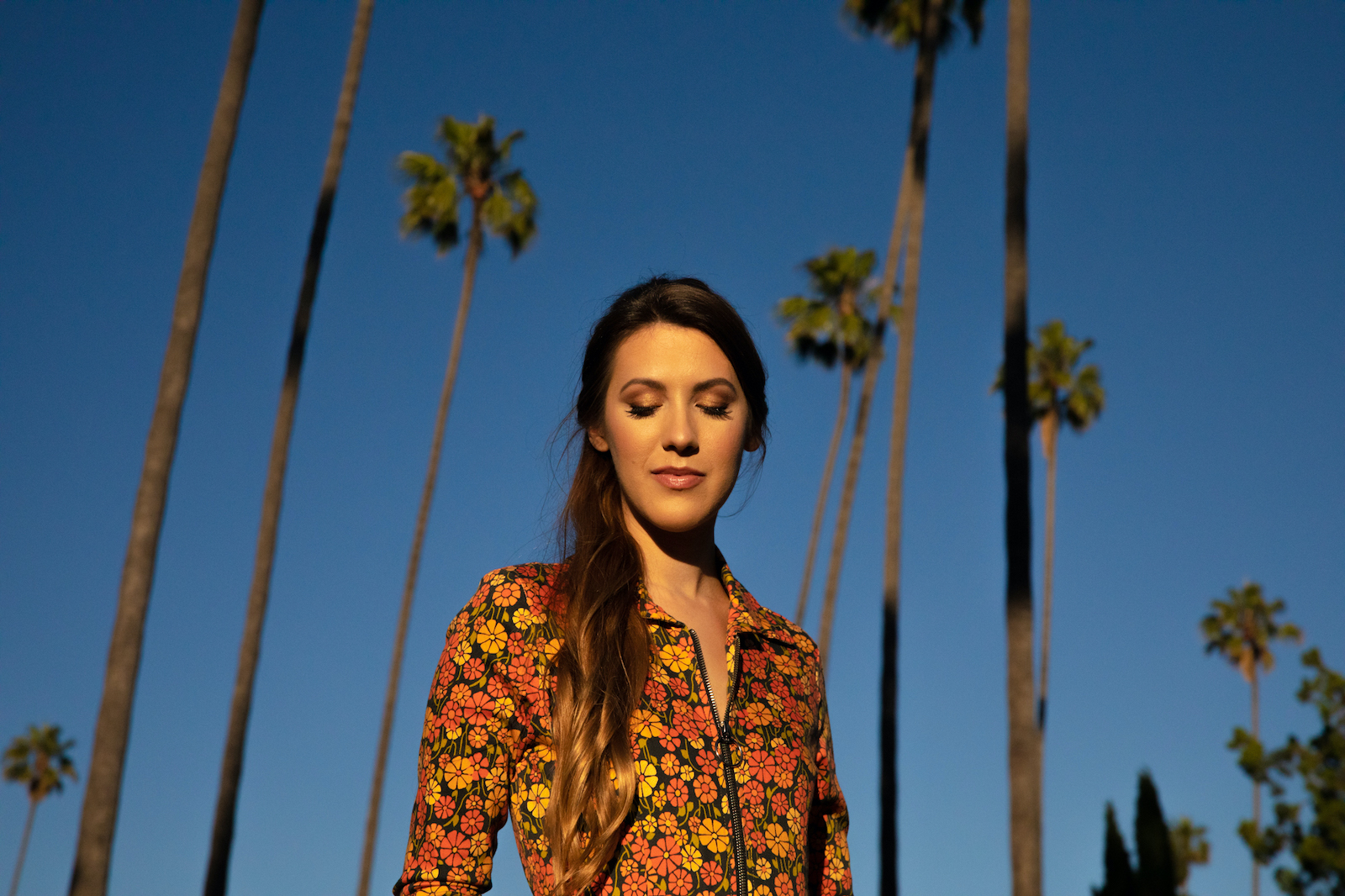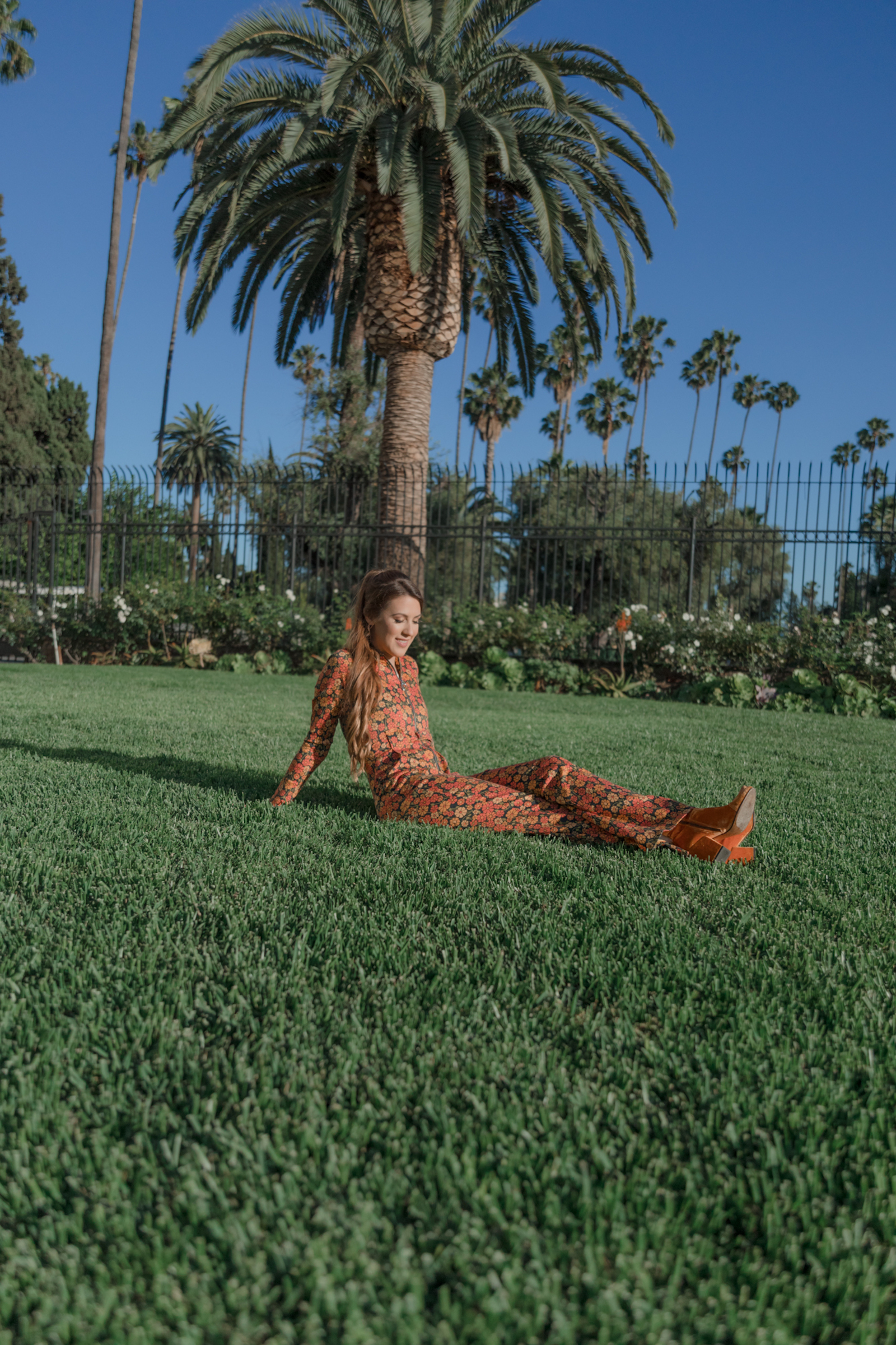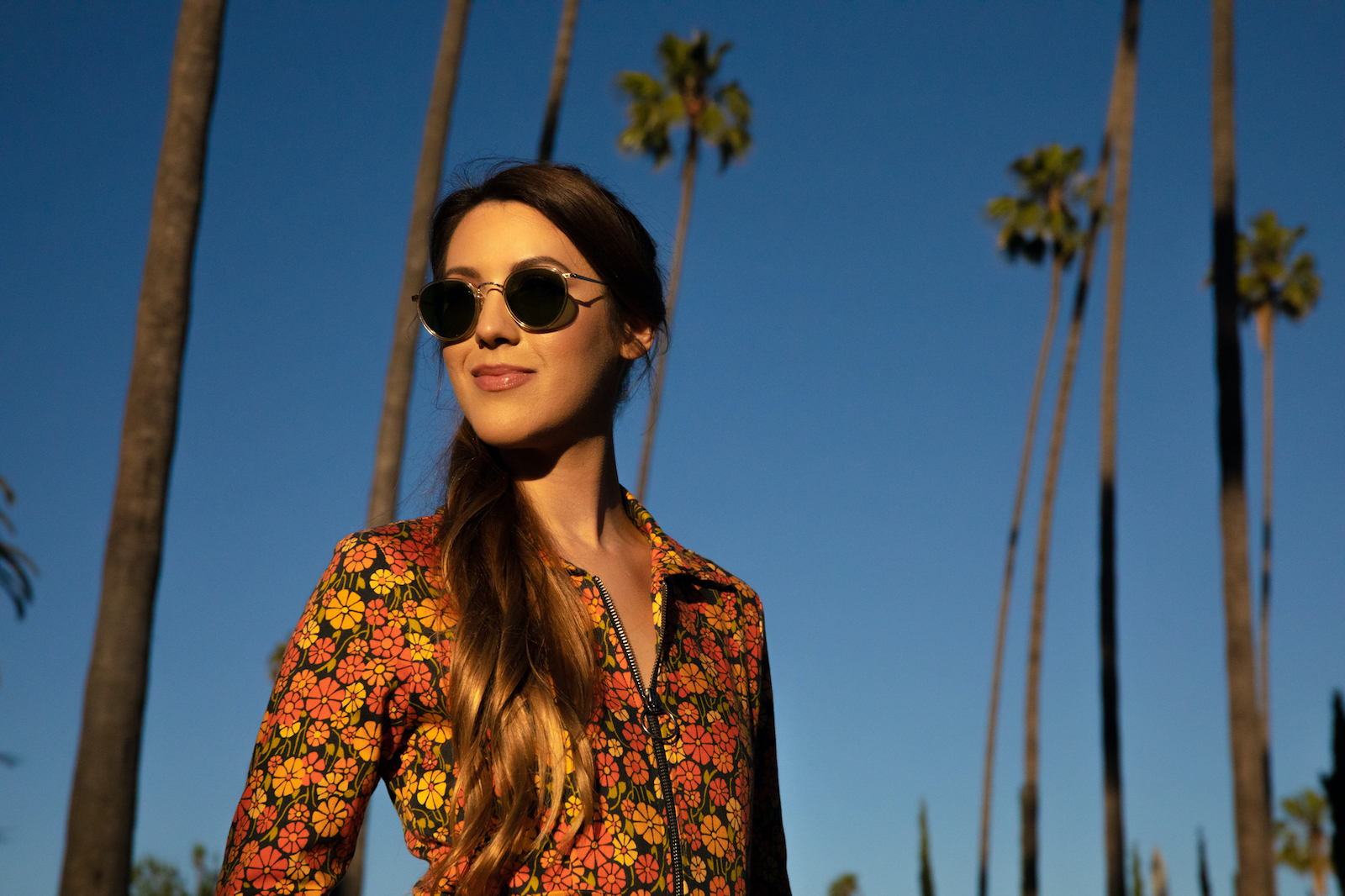 The new EP from Mara Connor titled No Fun was a long time coming; having been released on April 3 while we are all in self-quarantine, this is starting to feel like the basis of a joke, but in actuality, it’s a much more thoughtful tale. The LA-native is an evocative songwriter with a particular vision, one that comes through not only in song, but across her music videos as well. Each track on No Fun, and even the other stray tunes that don’t appear on the EP, adds to a warm Americana tapestry meant for sitting ‘round an autumn campfire.
The new EP from Mara Connor titled No Fun was a long time coming; having been released on April 3 while we are all in self-quarantine, this is starting to feel like the basis of a joke, but in actuality, it’s a much more thoughtful tale. The LA-native is an evocative songwriter with a particular vision, one that comes through not only in song, but across her music videos as well. Each track on No Fun, and even the other stray tunes that don’t appear on the EP, adds to a warm Americana tapestry meant for sitting ‘round an autumn campfire.
Connor stands out as the main visionary for the project, with many associated collaborations that fortify its position. Though the song does not appear on No Fun, Connor nevertheless wrote and released a duet with her friend Langhorne Slim called “Someone New,” revealing an extension of her sound not available elsewhere at the moment.
LADYGUNN connected with Connor via email to learn more about her new music and how she is staying occupied in the midst of self-isolation. The artist sets the record straight about the recurring themes of heartbreak and strength, and most importantly about how life is just plain complicated. The Santa Ana “Devil Winds,” the emotional toll of Noah Baumbach’s film, Marriage Story, and her filmmaker mother, Kate Connor, all played some part or another.
In these tough times, Mara Connor keeps her head held high while remaining mindful of the comfort that others may not experience in the midst of this crisis. If you have the means, please consider donating to Feeding America, an organization dedicated to feeding anyone in need.

Every song on ‘No Fun’ seems to be in a state of heartbreak. Was this an intentional theme to unite the release?
MARA CONNOR: I hear that in my songs too. It isn’t intentional. I think I just tend to romanticize heartbreak. I find a little piece of it, put it under a microscope and write about it. I’ve always preferred love stories without a happy ending. I fell asleep to the film “Casablanca” every night of eighth grade and dreamed of finding the Rick to my Ilsa, which is funny because (spoiler) they don’t end up together. Still, it’s such an epic love story. My favorite movie last year was Marriage Story. I think I watched it five times in one week and ugly cried through the whole thing. I guess I find the fleeting nature of love kind of beautiful.
Poetic images abound on the release; I love the mentions of clover and dew on “No Fun,” and the idea of a “soldier heart” is formidable. The perspective on the latter track is interesting as it ends with the line: “Spare your sorrow, I’m a soldier, son.” Can you speak a little bit about the origin of that song?
“Soldier Heart” was the first song I wrote for the EP (and the first one I recorded at the Bomb Shelter in East Nashville). I was living in Brooklyn and feeling hurt by someone. I started playing this finger-picked guitar part and singing these sad verse lyrics inspired by the “star light, star bright” nursery rhyme, almost as if from a child’s perspective. A lot of songs I was writing at the time came from a kind of youthful, wounded place. Most of my favorite music belongs to the “sad songwriter” genre (Joni Mitchell, Leonard Cohen, Elliott Smith) so this was nothing new for me. But I remember pausing and thinking, “What if I didn’t write another sad song? What if this came from a place of strength?” And then this chorus came out that was unlike anything I’d written before. I usually try to turn my brain off while writing but with “Soldier Heart,” my mind intervened and changed the whole tone and perspective of the song. Then my songs “No Fun” and “Wildfire” followed…which, now that I think of it, come from a similar place, sonically and tonally. I guess that moment of writing that chorus, channeling strength and opting for a triumphant anthem of resilience over a wounded ballad of defeat, ended up defining the sound of the whole EP.
“Wildfire” brings up vivid memories of the past few summers, and the lyrics align on such destruction. Yet the chorus seems to subvert it: “I don’t want to let you die, I want to watch it grow higher and higher.” What a tumultuous relationship!
Life is full of contradictions, isn’t it? When I wrote “Wildfire” I had just moved back to Los Angeles from New York. I was living in a little house on top of a hill in Angelino Heights, a charming neighborhood in Echo Park with Victorian houses, swaying palm trees and old street lamps. It was such a romantic tableau. On a particularly windy night, I was thinking about the notorious Santa Ana’s (nicknamed “The Devil Winds” for the destruction they leave in their path) and how something so beautiful can also be so deadly. Of course wildfires have devastated my home state of California and my heart goes out to anyone affected by them. The “wildfire” in my song is just a metaphor for the allure of something or someone dangerous. There’s a line in the song “if you’re a wildfire, I’m a wildflower and I’m ready to face the heat.” At the time, I was wrapped up in a passionate but unhealthy relationship and this was kind of my philosophy. I thought it was sexy to be with someone tortured or complicated. I run from that kind of person now.
The release includes a cover of “Yellow Eyes,” which was originally performed by Rayland Baxter. What led you to this song?
Every so often you come across a song that you didn’t write that somehow feels personal. When I first heard “Yellow Eyes,” I had just moved back home to LA, leaving someone behind in New York, and the song really spoke to me. There’s something so beautifully melancholy about it. But it’s also kind of emotionally detached. He isn’t feeling sorry for himself. It was his choice to leave. It was probably the right decision, to pave his own path. But it’s still sad. And he’s moving on, but these past experiences and dead-end relationships still haunt him. I also love Rayland’s voice. I’d love to do a duet with him one of these days.

You have collaborated with Langhorne Slim, worked with producer Adrian Simon (son of Paul and Edie Brickell), and covered “Old Man” by Neil Young. All these influences seem to hover across the release; when writing and recording the EP, did you have specific references in mind?
My song “No Fun” was inspired by George Harrison’s “All Things Must Pass.” He’s a big influence and his poster from the original vinyl of that album hangs above my piano. “Wildfire” came to me after falling asleep listening to Jonathan Wilson’s record “Gentle Spirit” for the first time…as the record ended I woke up and the song came to me fully formed. My friend Billy Bennett has a song “Lou Wheez” that was playing in my Brooklyn apartment when I started writing “Soldier Heart” (and Billy ended up singing harmonies on the song when we recorded it in Nashville). In terms of songwriting, Joni Mitchell and Leonard Cohen are two of my all-time favorites. I remember specifically referencing the production of Cass McCombs’ “County Line,” Angel Olsen’s “The Waiting” as well as The Byrds’ rendition of “Mr. Tambourine Man.” I was also listening to a lot of Big Star and The Velvet Underground & Nico at the time.
Both music videos for “No Fun” and “Wildfire” have brilliant colors and an abundance of charisma, but it seems that you worked with entirely different crews on each. Do you have a particular ‘vision’ for your music’s visual accompaniment?
I do…both the “No Fun” and “Wildfire” videos are kind of a twisted character study of an outsider, set in a colorful, retro world…which, come to think of it, also describes the songs on my EP. I love indie filmmaking and like to make videos that tell unconventional stories with a developed character arc and break conventions with plot twists and surprise endings. I have a pretty dry, self-aware sense of humor too, which comes through in my videos.
For both videos I assembled a dream team to bring my crazy ideas to life. I co-directed the “Wildfire” video with my brilliant filmmaker mom Kate Connor and a mostly female crew and also worked closely with my friends Charlotte and Dani (an amazing directing duo who go by Similar But Different) on the “No Fun” video. I worked with two of my favorite DPs, Chris Ripley and Cristina Dunlap, to create a saturated ‘70s film look. My friend Aza Ziegler styled both videos – we referenced my vintage style icons Francoise Hardy, Audrey Hepburn and early Cher.
Watching the “Wildfire” video now, it feels eerily prophetic to these times…in it, I’m dating a mannequin while “social distancing,” playing to an empty theater and losing my mind in self-isolation.
How are you channeling your energy during the quarantine?
I’m in my fourth week of self-isolation. The first two were a blur, feeling overwhelmed by the news, worrying about loved ones and trying to process the collective trauma we’re all experiencing. Those feelings are still there, but I’m starting to feel creative again, and writing has been cathartic. Grateful we still have music. I’m distracting myself with books, TV, music, yoga, cooking and teaching myself new skills like video editing so I can keep creating from quarantine. I’m trying to use this time to reflect and really take stock of my life. I recognize that this is a privilege that many are not afforded, which is really heartbreaking. I’m worried about those who are particularly vulnerable, the homeless, imprisoned, food insecure….and I have so much gratitude for the heroes risking their lives on the front lines to keep us safe.
The thing that is really getting me through is my support system. I think a silver lining (if there can be one) to come out of this is the deep bonds we’re forming and strengthening. I’ve spent hours on the phone with friends and family, talking about everything and nothing. We’re really listening and holding space for each other. In a time of unprecedented grieving and loss, it really makes you appreciate what you still have.

CONNECT WITH MARA CONNOR
INSTAGRAM // TWITTER // FACEBOOK
photos / Chase Leonard
story / Zoë Elaine
